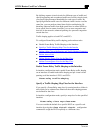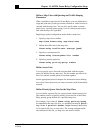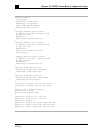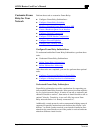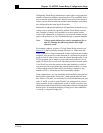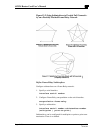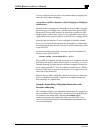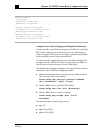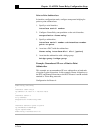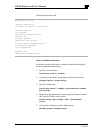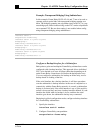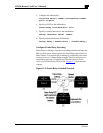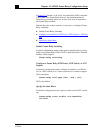
AI2524 Router Card User’s Manual
Page 13-22 August 1997
2524UM
You can configure some protocols for dynamic address mapping and
others for static address mapping.
Accept Inverse ARP for Dynamic Address Mapping on Multipoint
Subinterfaces
Dynamic address mapping uses Frame Relay Inverse ARP to request
the next hop protocol address for a specific connection, given a DLCI.
Responses to Inverse ARP requests are entered in an address-to-DLC
mapping table on the router or access server; the table is then used to
supply the next hop protocol address or the DLCI for outgoing traffic.
Since the physical interface is now configured as multiple subinter-
faces, you must provide information that distinguishes a subinterface
from the physical interface and associates a specific subinterface with
a specific DLCI.
In interface configuration mode, associate a specific multipoint sub-
interface with a specific DLCI:
frame-relay interface-dlci
dlci
Inverse ARP is enabled by default for all protocols it supports, but can
be disabled for specific protocol-DLCI pairs. As a result, you can use
dynamic mapping for some protocols and static mapping for other pro-
tocols on the same DLCI. You can explicitly disable Inverse ARP for
a protocol-DLCI pair if you know the protocol is not supported on th
other end of the connection.
Because Inverse ARP is enabled by default for all protocols that it sup-
ports, no additional command is required to configure dynamic ad-
dress mapping on a subinterface.
Example: Frame Relay Multipoint Subinterface with
Dynamic Addressing
This example configures two multipoint subinterfaces for dynamic ad-
dress resolution. Each subinterface is provided with an individual pro-
tocol address and subnet mask, and the
interface-dlci
command associates the subinterface with a specified DLCI. Ad-
dresses of remote destinations for each multipoint subinterface will b
resolved dynamically.



